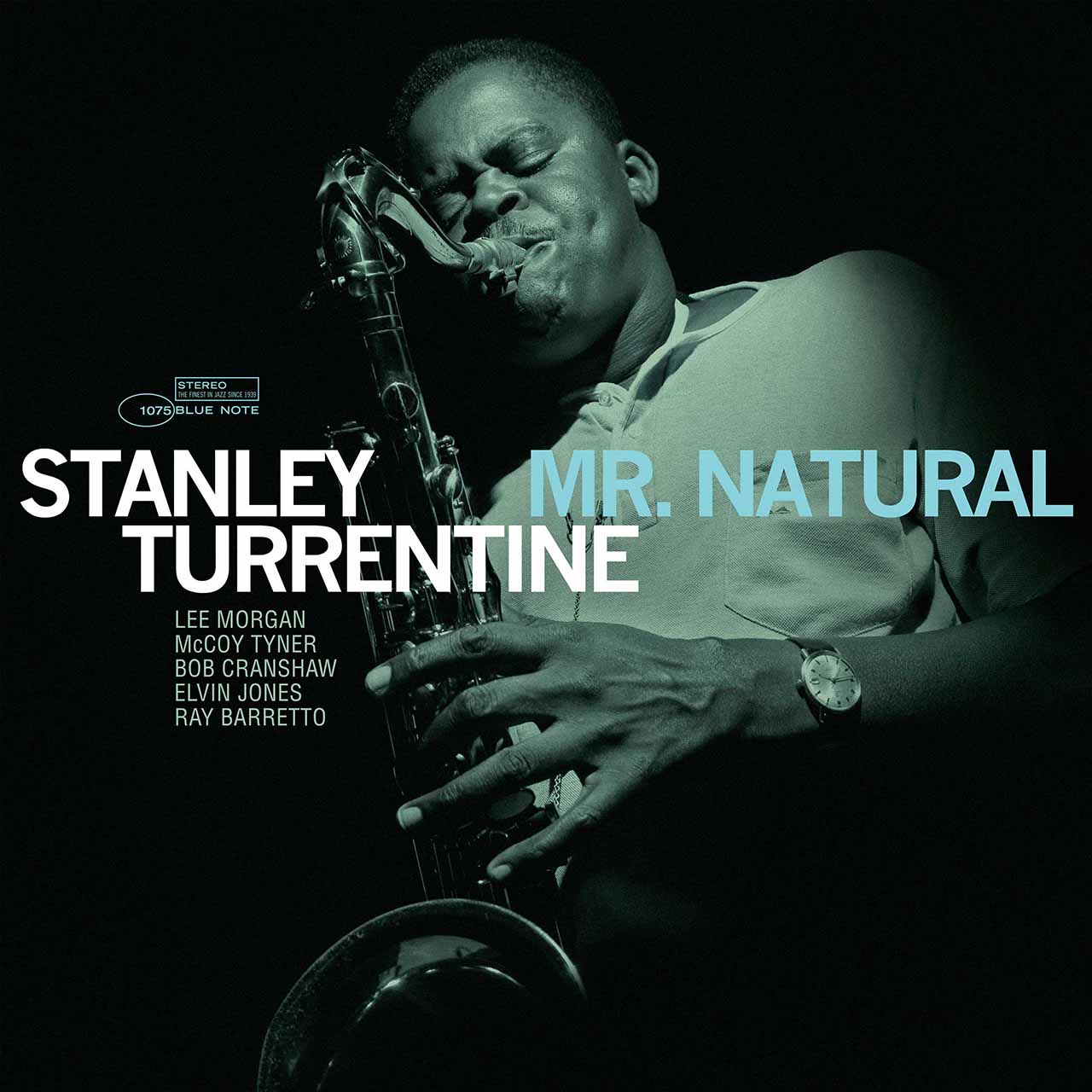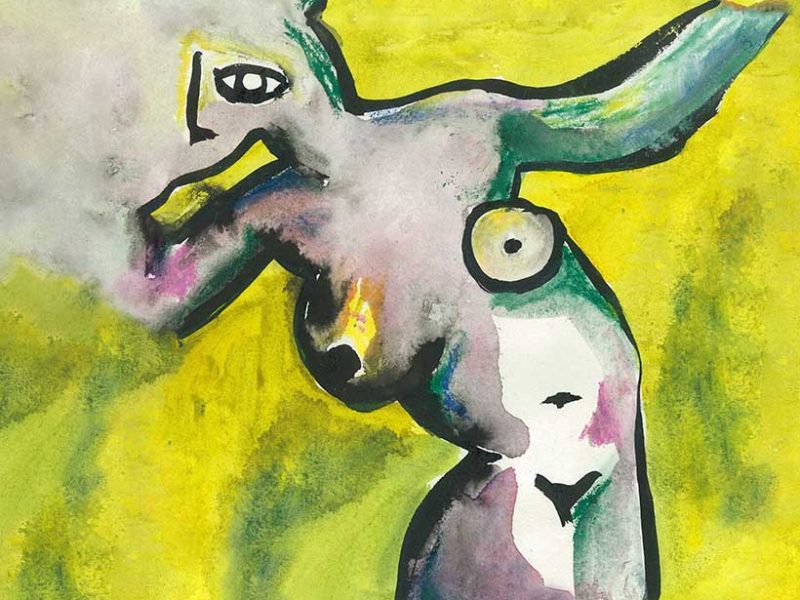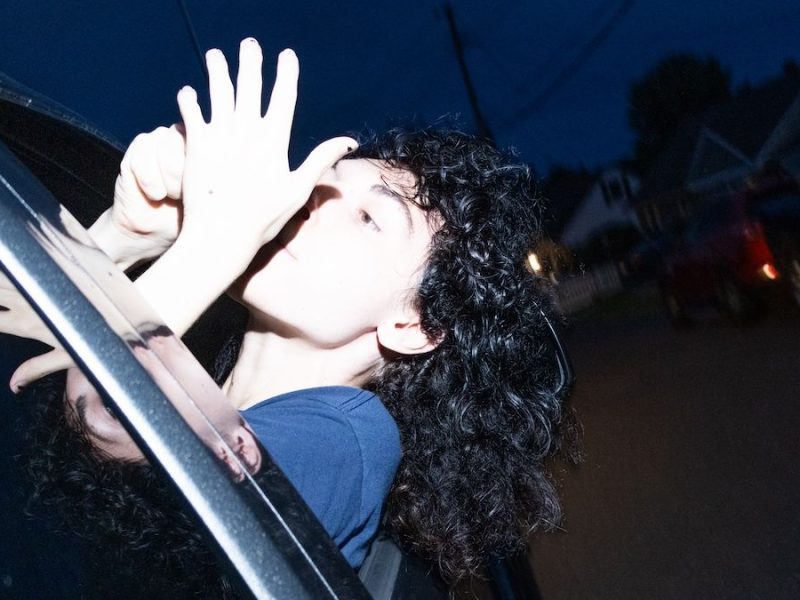Dubbed the “Steel City” and renowned as an important industrial metropolis in 20th century America, Pittsburgh, Pennsylvania was also a thriving hotbed of jazz talent. It was home to some of the genre’s finest pianists – including Mary Lou Williams, Erroll Garner, Ahmad Jamal, Sonny Clark, and Horace Parlan – and produced one of its greatest drummers and bandleaders in the shape of Art Blakey. It was also where tenor saxophonist Stanley Turrentine, one of the finest exponents of a post-bebop style called soul jazz, was born and raised. Turrentine made his mark in the jazz world in the 1960s at Blue Note Records with a series of outstanding albums where his husky horn sound reflected his Pittsburgh roots. During his first stint at the label, between 1960 and 1969, he was prolific, recording 24 albums as a leader, including Mr. Natural, an LP highlighting Turrentine’s rugged soulfulness and melodic fluency.
Playing the blues came as naturally as breathing to Stanley Turrentine, an intuitive musician without formal music training. His first major gig was as a seventeen-year-old in the band of bluesman Lowell Fulson in the early 50s before he replaced John Coltrane in Earl Bostic’s group. After a stint in the US military, in 1959 he joined drummer Max Roach’s band. The following year, a record date with organist Jimmy Smith for Blue Note resulted in Turrentine signing with the iconic New York-based jazz label.
Listen to Stanley Turrentine’s Mr. Natural now.
At Blue Note, Turrentine quickly became one of the label’s favorite musicians, playing as a sideman on albums for Jimmy Smith, Horace Parlan, Kenny Burrell, and Duke Jordan, as well as making his own records, some in tandem with his wife, organist Shirley Scott. After recording his tenth Blue Note album Hustlin’ in September 1964 the label’s co-founder and producer Alfred Lion summoned Turrentine to Van Gelder Studio – Blue Note’s go-to recording facility run by sound wizard Rudy Van Gelder – for what became Mr. Natural.
Turrentine’s sidemen included the dazzling trumpeter Lee Morgan, bassist Bob Cranshaw, and on the first three tracks, Latin conguero Ray Barretto. More significantly, the session marked Turrentine’s first time recording with pianist McCoy Tyner and drummer Elvin Jones, then members of the influential John Coltrane Quartet, renowned for pushing jazz forward into modal and avant-garde territory.
Their influence can be felt on the opening track, “Wahoo (aka Stanley’s Blues),” which its writer Duke Pearson later recorded with a radically different arrangement as the title track of his 1965 Blue Note album. Thanks to Tyner and Jones’ influence, Turrentine’s version with its loping shuffle beat hints at modal jazz, though it doesn’t stop the saxophonist from doing what he does best – blowing long, soulful, blues-tinged melodies. “I might put my music in different settings,” he once said, “but I can’t change me.”
Named after Turrentine’s wife, “Shirley” is a mid-tempo blues where the saxophonist and Morgan blow carefully woven harmonized horn lines over a simmering groove. “Tacos,” highlighting Barretto’s congas, has a pronounced Latin feel, while the group transforms the standard “My Girl Is Just Enough Woman For Me” into a fluid hard bop swinger. In sharp contrast, the album’s satisfying finale finds Turrentine taking a detour into pop, serving up a cool bluesy take on The Beatles’ 1964 chart-topper “Can’t Buy Me Love,” powered by Elvin Jones’ irresistible swing pulse.
Ultimately, Mr. Natural showed Turrentine’s innate musicality, resisting the progressive jazz trends of the early 60s for something more accessible and rooted in the blues; music that was down-to-earth, unpretentious, and to borrow a phrase from Art Blakey, washed away the dust of everyday life.
Listen to Stanley Turrentine’s Mr. Natural now.



